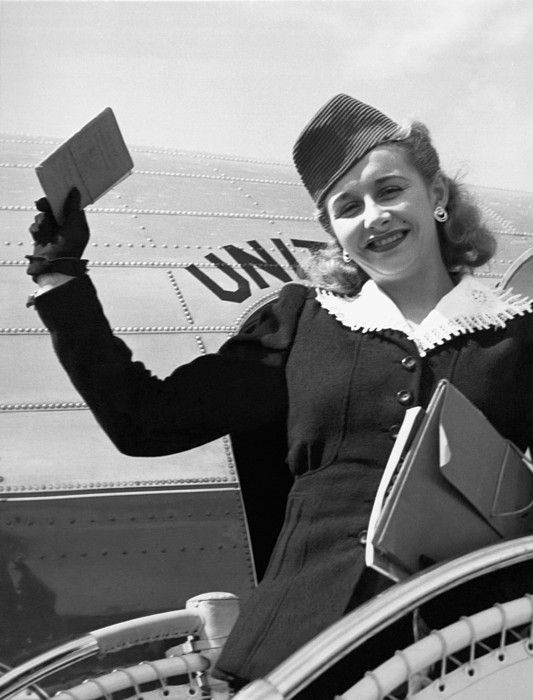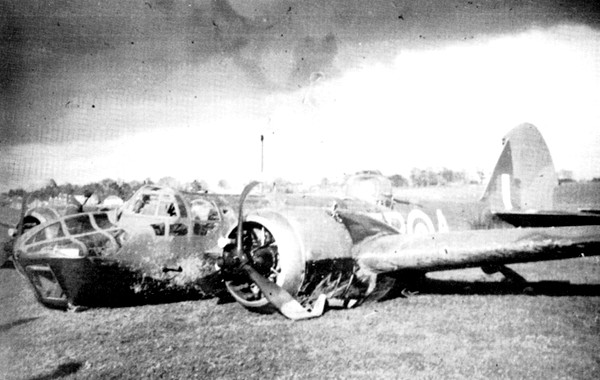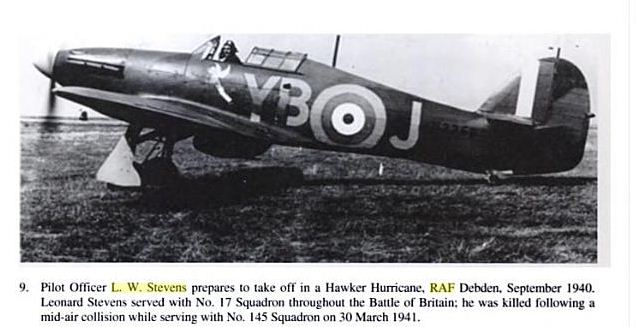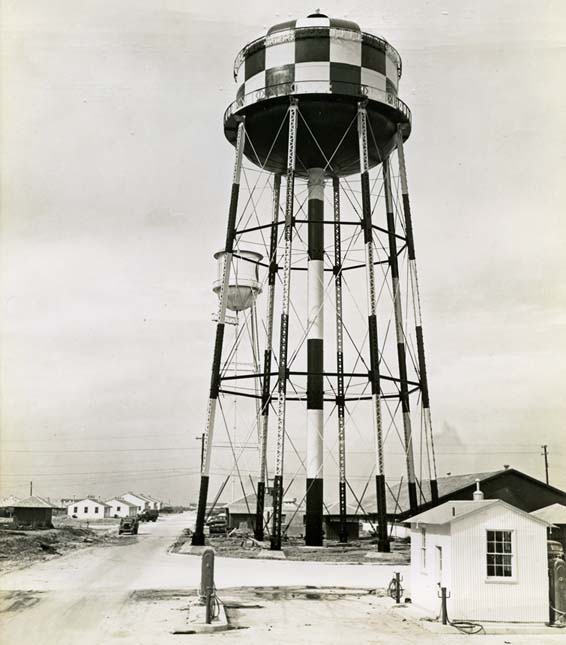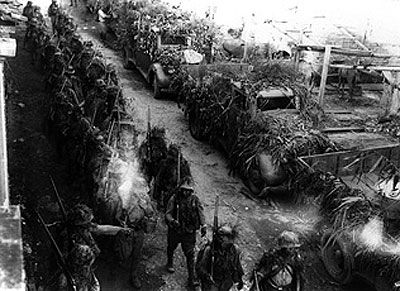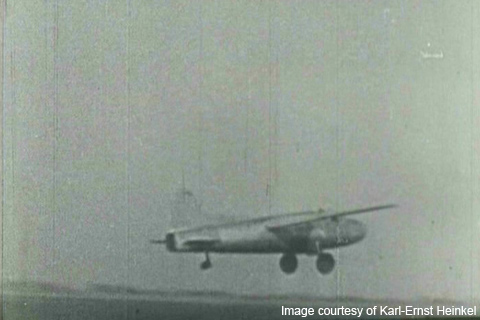Saturday 5 April 1941
The Wehrmacht makes final preparations for what is expected to be a very straightforward operation. German commandos occupy the docks along the Danube to facilitate landings. Adolf Hitler tells Romanian leader Ion Antonescu that the invasion will take place on the 6th.
Yugoslavia's policy, as set for in Plan R-41, is to defend the entire frontier - unlike, say, Holland, which from the start in May 1940 intended only to preserve "Fortress Holland," a roughly rectangular region bordered by Amsterdam and Rotterdam. This also is what Greece would like to do. However, the Yugoslav Army is too small to defend everywhere, and as the famous dictum goes, he who defends everything defends nothing.
British Foreign Secretary Anthony Eden and CIGS General John Dill were supposed to return to England in March, but have remained in the region due to the growing crisis. Today, they fly from Athens to Cairo.
General Henry Maitland Wilson, fresh of Middle East Commander General Archibald Wavell's staff in Cairo, takes command of British forces in Greece. He receives Ultra decrypts stating that the Germans will invade in the morning. While often such information is of inestimable value, for that to be the case, one must have the means to take advantage of it. There is nothing further that Wilson can do to meet the invasion.
The British line is stretched along the Aliakmon River in northeast Greece, and Wilson has his headquarters at the base of Mount Olympus in central Greece. This spot is handy for communications both with his own troops and the Greeks defending against the Italians in Albania. With the main Greek troop concentration in the west near the Adriatic coast, they have few troops to spare in the east. Thus, the British forces, hurriedly brought over pursuant to Operation Lustre over the past couple of months, play a critical role in defending the heart of the country - and the rear of the Greek army in Albania.
While General Wilson is in overall command of British operations in Greece as commander of "W" force, General Thomas Blamey takes command of newly formed 1st Australian Corps. This incorporates British, Australian and New Zealand units. General Carton de Wiart, a legendary military figure who led operations in northern Norway early in 1940, becomes head of the British military mission in Yugoslavia. De Wiart has had his residence in Poland and is considered a specialist about the region.
British Operation Lustre continues bringing troops into Athens. Convoy AN 25 (one Greek and five British ships) departs from Alexandria bound for Piraeus. In addition, some British garrisons are landed on Aegean islands - today, the 1st Battalion of the British Bedfordshire lands on Lemnos.
East African Campaign: Riding in armored cars, the 11th (African) Division (Major-General H. E. de R. Wetherall) crosses the Awash River and arrives at the outskirts of Addis Ababa, the capital of Italian East Africa. The Italians do not put up a fight, and in fact, they have abandoned the city, but the South Africans wait until negotiations conclude before entering. The Italian commander, the Duke of Aosta, has taken his remaining forces out of the capital for continued resistance. From his positions in mountain fortresses in Gondar, Amba Alagi, Dessie and Gemma, the Duke of Aosta intends to form a "redoubt" which will continue the resistance. Aosta orders the Italian leader in the city, Agenore Frangipani, to surrender the city rather than cause harm to its Italian residents. The South African air force raids the airfield.
At Massawa, the situation is not much better for the Italians. The 10 Infantry Brigade of the 5th Indian Infantry Division has reached the outskirts of the well-defended port, where it has hooked up with Briggs Force, which has come from a completely different direction. Things look dire for the Italians. Italian Rear Admiral Mario Bonetti asks for surrender terms at 13:30, but then an order arrives from Rome to "fight to the last man." British General Cunningham, meanwhile, warns that if Bonetti does not surrender, Cunningham will not instruct the British to protect Italian civilians from native tribesmen. At Addis Ababa, the Polizia dell'Africa Italiana (Police of Italian Africa) have remained in the city to maintain order, which is probably best for both the Italians and the British.
 |
| Me 109E 5/JG 27 Uffz. Hans Niederrhofer in Bitola (Bitolj), Macedonia, April 1941. |
Operation Savanna, a Special Operations Executive (SOE) mission, ends in complete failure. This was the operation begun on 15 March 1941 in which an RAF Whitley inserted an assassination squad near Vannes to kill Luftwaffe pilots of the pathfinder group. British intelligence was faulty, and the pilots did not travel on one bus to their airport as believed. Without a target, the Special Operations Executive men accomplished nothing and headed for the coast for extraction. Out of five paratroopers involved in the operation, one goes missing, another fails to reach the rendezvous spot, and three make it to the Sables d'Olonne beach on schedule for a submarine pickup. In the event, the kayaks used for the extraction are damaged on the submarine, so only two of the three men can be taken off in a dinghy paddled ashore by Geoffrey Appleyard of the SOE's Small Scale Raiding Force. The third SOE man, Joël Letac, remains behind and proceeds to join partisans in Paris.
Battle of the Atlantic: The British note the approach of good campaigning weather, stoking their invasion jitters. After all, the chatter out of Berlin during the fall was that the invasion of England, Operation Sea Lion, would simply be postponed until the spring. Four Royal Navy minelayers (Agamemnon, Menestheus, Port Quebec and Southern Prince) depart from Scapa Flow to lay minefield SN 8. These operations may seem mundane, but they are taken extremely seriously by the British, and they withdraw heavy cruiser HMS Norfolk from the patrols on the Denmark Strait to provide cover, along with cruiser Suffolk. Separately, minelayer Teviotbank lays minefield BS 53.
The Kriegsmarine sends half a dozen destroyers through the Straits of Dover just after dark to reinforce their forces in the Bay of Biscay. The RAF observes these movements and sends some of its own destroyers out to investigate, but there is no contact. The Admiralty assumes that this presages some kind of cruiser sortie such as Operation Berlin - but, in fact, it is a simple ship transfer unrelated to larger operations.
U-105 (Kapitänleutnant Georg Schewe) is operating off the coast of South America - such extended operations are made possible by the German supply ship network - when it spots a freighter. Schewe torpedoes and sinks 5200-ton British freighter Ena de Larrinaga. It is the first U-boat success off the coast of South America, extending the conflict into a completely new sector. There are 5 deaths on the Ena de Larrinaga, while 38 survivors are left adrift at sea for 13 days before being found.
U-76 (Kptlt. Friedrich von Hippel), on its first patrol, is part of the wolfpack attacking Convoy SC-26 about 250 miles south of Iceland. The convoy already has taken massive losses. The repeated attacks have put the British are on high alert. When Hippel fires a torpedo shortly before dawn that damages and ultimately sink 5351-ton British freighter Athenic, the Royal Navy escorts swarm to attack the submarine. HMS Scarborough and Wolverine force U-76 to the surface, enabling the crew to escape before it sinks. There are one death and 42 survivors, including von Hippel. On the Athenic, all 40 people are rescued by HMS Arbutus.
The Luftwaffe bombs and sinks 450-ton British freighter St. Clement just off Aberdeen. There is one death.
The Luftwaffe bombs and sinks 496-ton British freighter Rattray Head in the same area as the St. Clement off Aberdeen. There are three deaths.
Canadian destroyer HMCS Assiniboine collides with 789-ton British freighter Lairdswood in the Irish Sea. The destroyer proceeds to Greenock for repairs which take well over a month.
The Regia Aeronautica bombs and sinks 2290 ton Greek freighter Sifnos off the island of Milos, north of Crete.
U-431 (Kapitänleutnant Wilhelm Dommes) is commissioned.
 |
| A caboose of the Dowling & Camp sawmill in Slater, Florida. 5 April 941 (Photographer George Pettengill via Donald R. Hensley, Jr.). |
The British are scampering southeast on the Via Balbia toward Gazala. The Luftwaffe gets Bf 110s in the air to harass the retreating British around Derna and Junkers Ju 87 Stukas at Msus.
The Luftwaffe notes that the Royal Navy has brought in to Tobruk a cruiser and 13 transport ships for evacuations - though the road remains open to Egypt. In fact, the Germans are mistaken, the cruiser is almost certainly a wrecked Italian one (the San Giorgio). The British actually are using their transports to bring troops in, not take them out. This incident just illustrates the difficulties of relying on aerial reconnaissance.
On the ground, Lieutenant General Erwin Rommel orders the Ariete Division toward the fortress at Mechili and the 5th Panzer Regiment, incorporating the Ariete Division's tanks, toward Msus. Rommel also orders Fliegerfuehrer Afrika to transport elements of the 5th Light Division to At Tmimi in the evening to block the British retreat on the Via Balbia coastal road.
The troops in the lead are those of Graf Schwerin. At this time, he is moving his forces to the northeast. They arrive at Tengeder around 21:00. Schwerin needs air supply for further maneuvers, however. A pincer movement directed at Msus is developing, though how many British troops will remain to be captured is an open question. The Italian Brescia Division also is on the move, reaching Regima and Driana at 22:00.
Today is one of General Rommel's classics. He flies to the front in his Fieseler Storch observation plane and takes personal of the Ariete Division troops approaching Mechili. It is this kind initiative that the British, relying on Ultra decrypts and spy reports to allocate their forces, cannot foresee. It is one of the few times of the war when the British are operating blind, on an even footing with the Germans who of course don't have anything like Ultra reports - which helps to explain the otherwise inexplicably chaotic British retreat. It also is a high point for German arms, with their troops in Libya sending the British packing and final preparations for Operation Marita on the other side of the Mediterranean.
In Malta, major shortages are developing in several basic areas. Water supplies to the troop are shut off for 18 hours a day to conserve water. In addition, civilians have taken to hoarding kerosene, so rationing is instituted. Each purchase is limited to half a gallon, and the police are instructed to watch supplies carefully.
Soviet/Yugoslavian Relations: The two countries announce a treaty of friendship and nonaggression in Moscow. There are no economic responsibilities nor military guarantees, as there are with the Tripartite Pact - it is more a symbolic statement. The most important aspect is that, with this agreement, the Soviet Union gives public de jure recognition of the new Yugoslav government, something that actually had been given on 3 April in private between Andrey Y. Vyshinsky, the Soviet Vice-Deputy of Foreign Affairs, and Milan Gavrilovic, the Yugoslav Ambassador to the USSR and a Cabinet member in the Simovic government.
In hindsight, some view this agreement as more of a slap at Germany by the Soviets than signifying anything of consequence regarding Yugoslavia. However... this seems to be more a case of reading meanings into actions based on later events that may not really have been there originally. The Soviets simply don't want to be involved in a Balkan war at this time which might embroil them in a larger war with Germany.
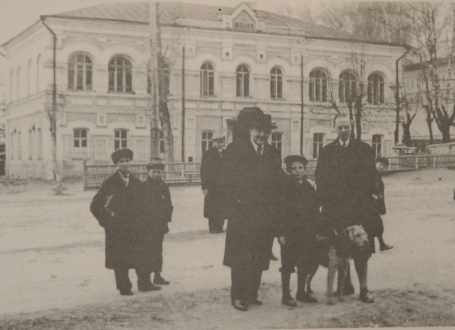 |
| Yugoslav Ambassador to the Soviet Union Milan Gavrilovic, left, in Moscow with British Ambassador to the USSR Stafford Cripps, right, at the time of the Friendship Pact with the Soviet Union. |
Spy Stuff: Reports continue to flow into Moscow about a German invasion of the Soviet Union. A spy ring centered in Prague (the mysterious "Lucy" ring) reports around this date that the invasion will begin on 15 May - which in fact was Hitler's original intention as set forth in his 18 December 1940 Fuhrer Directive, but the situation has changed and Operation Marita must come first. Presumably, the spy - whoever it was - got a peek at that document and felt it was worth reporting.
Somewhat paradoxically, one of the problems with the Soviet military intelligence about Operation Barbarossa is that there simply is too much - everyone is claiming that an invasion is coming like a chorus singing out of tune. Not only do the different sources give different dates and other particulars, but sometimes the same sources change their basic particulars such as the date. The Germans themselves do not know when the invasion will occur - and there remains an exceedingly slim possibility that it may not occur at all. Hitler, meanwhile, is sending Stalin reassuring messages to not believe all these false rumors. Stalin views the entire issue as one of "English provocation," as he writes on one of the reports.
The Soviets do, however, have one unquestionably reliable source that is beginning to raise some concern - but not in Moscow. Trade between the two countries is proceeding according to agreements reached in 1939 and 1940 which provide, in general terms, for shipment to Germany of raw materials such as grain and shipment to the USSR of German finished goods. The German embassy in Moscow notes without elaboration that the Soviet exports to Germany increased during March 1941, while shipments in the other direction fell precipitously. Hitler, of course, would rather not ship equipment to the Soviets that they can later use against them. The Soviets, however, do not seem to read much meaning into this trend, and in fact, adhere to their trade obligations with extreme diligence so that the Germans cannot claim a breach of the agreements.
 |
| Bette Davis cuts her 100 lb 33rd birthday cake in Littleton, New Hampshire. Davis and the rest of the cast are there for the world premiere of her Warner Bros. film, "The Great Lie." 5 April 1941. |
As with all the early Luftwaffe jets, the main factor delaying the prototype's refinement is the engine. The HeS 8 engine is coming along slowly, and another engine, the HeS 30, is also proceeding along at about the same pace and may even be a better choice. What Heinkel does not know is that the RLM has other jet projects that it feels have more potential than the He 280. They don't feel the need to pursue two of these iffy projects at this stage - especially with the war going so well.
Soviet Military: Some sources claim that the Soviets make the maiden flight of the MiG-3, designed by Artem Mikoyan and Mikhail Gurevich, today. However, the I-200, as it is designated at this stage, flew on 5 April 1940. In fact, over 20 MiG-3 fighters already have been delivered to the Red Air Force by this time.
Polish Military: Major General Franciszek Kleeberg, one of the few heroes of the Polish campaign for the Poles for his solid performance between the Bug and Vistula rivers in early October, perishes in a hospital near Dresden. Kleeburg has been imprisoned in Oflag IV-B Koenigstein, where he experienced severe health problems and became an invalid. He is buried in Dresden. After the war, his remains are brought back to Poland and reburied amongst those of his fallen comrades in Operation Group Polesie on the site of his last battle.
US Military: Congress appropriates $14.5 million in the "Fifth Supplemental National Defense Appropriation Act, 1941." Among other things, it allocates $14.575 million to establish a Marine Corps training ground on the east coast.
 |
| The New Yorker - Saturday, April 5, 1941 - Issue # 842 - Vol. 17 - N° 8 - Cover by Roger Duvoisin. |
Japanese Homefront: Rubber stocks are running low in Japan due to the trade sanctions imposed by President Roosevelt. The Japanese take diplomatic steps to secure all rubber exports from Thailand, Indochina and the Dutch East Indies.
British Homefront: Sir Nigel Gresley passes away at age 64. He is the designer of the Mallard Pacific locomotive, which set speed records, and the Flying Scotsman Express.
American Homefront: Warner Bros. drama "The Great Lie" premieres in Littleton, New Hampshire. This is a week before its wide release and is done at star Bette Davis' request to benefit a local hospital there. The story involves a typical 1940s "difficult marital situation," wherein a married man has a baby with another woman, and then abruptly perishes - leaving everyone to figure how to, um, split the baby. While the film is quickly forgotten after the war, during the war years "The Great Lie" is quite popular. It leads to a radio adaptation featuring stars Davis and Mary Astor, and Astor wins the Academy Award for Best Supporting Actress.
Future History: Michael Moriarty is born in Detroit, Michigan. Michael studies acting in London in the mid-1960s, then gains fame as a baseball player in "Bang The Drum Slowly" (1973), a film about a dying player on the New York Yankees. The role was somewhat appropriate because Moriarty's grandfather was a long-time Major League Baseball player, coach, and umpire. Moriarty goes on to star in "Law & Order" on television from 1990-1994. He has appeared in many successful films such as "The Last Detail" and has espoused various political causes. He currently lives in Maple Ridge, British Columbia, Canada and continues to perform music, write and act.
 |
| An ordinary traffic incident between two Chevy sedans at 23rd and Harrison in San Francisco, 5 April 1941 (San Francisco Public Library, via Flickr). |
April 1, 1941: Rommel Takes Brega
April 2, 1941:Rommel Takes Agedabia
April 3, 1941: Convoy SC-26 Destruction
April 4, 1941: Rommel Takes Benghazi
April 5, 1941: Rommel Rolling
April 6, 1941: Operation Marita
April 7, 1941: Rommel Takes Derna
April 8, 1941: Yugoslavia Crumbling
April 9, 1941: Thessaloniki Falls
April 10, 1941: USS Niblack Attacks
April 11, 1941: Good Friday Raid
April 12, 1941: Belgrade and Bardia Fall
April 13, 1941: Soviet-Japanese Pact
April 14, 1941: King Peter Leaves
April 15, 1941: Flying Tigers
April 16, 1941: Battle of Platamon
April 17, 1941: Yugoslavia Gone
April 18, 1941: Me 262 First Flight
April 19, 1941: London Smashed
April 20, 1941: Hitler's Best Birthday
April 21, 1941: Greek Army Surrenders
April 22, 1941: Pancevo Massacre
April 23, 1941: CAM Ships
April 24, 1941: Battle of Thermopylae
April 25, 1941: Operation Demon
April 26, 1941: Operation Hannibal
April 27, 1941: Athens Falls
April 28, 1941: Hitler Firm about Barbarossa
April 29, 1941: Mainland Greece Falls
April 30, 1941: Rommel Attacks
2020

